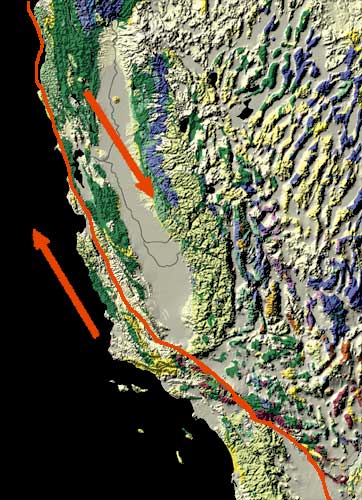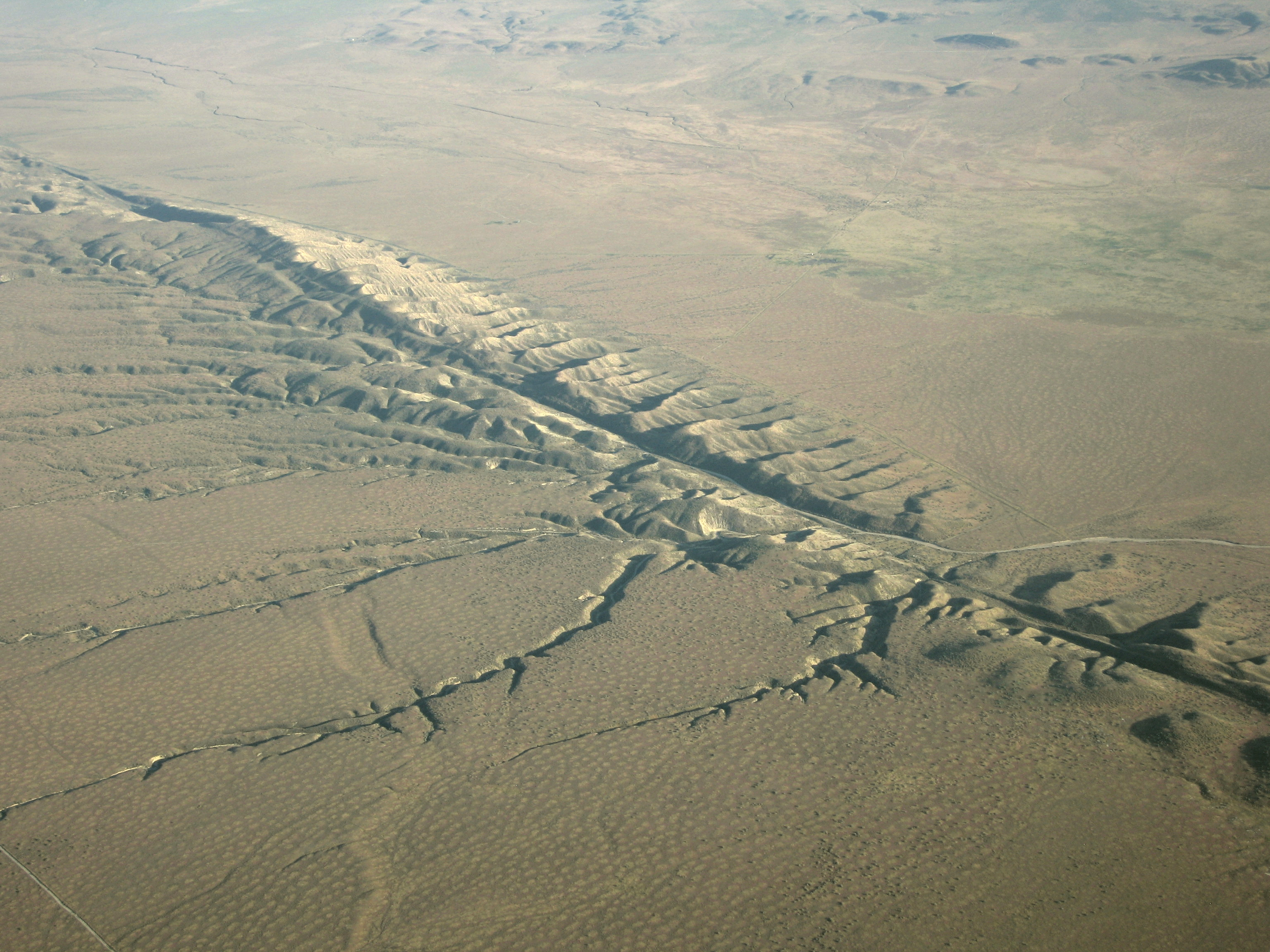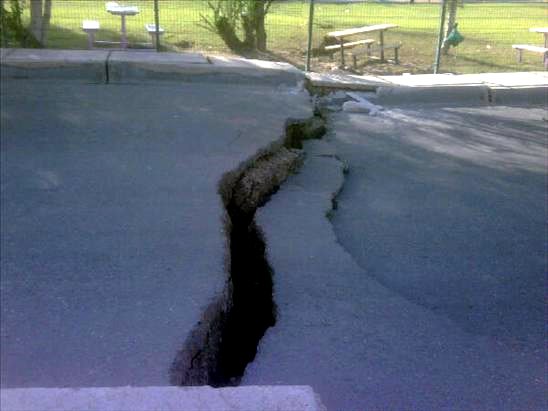| Over the years we have been experiencing several earth quakes in Southern California. Most of them have been originating in the San Andreas Fault, which actually runs not far from here. But what is it all about that San Andreas Fault? First of all it is part of the “Ring of Fire”, which runs all around the Pacific Ocean, the West Coast of the U.S. and Canada being a big part of that. The Fault Line is divided into 3 sections. The Southern, the Central and the Northern Section.
Box Canyon, near the Salton Sea, contains upturned strata resulting from that section of the fault.The fault then runs along the southern base of the San Bernardino Mountains, crosses through the Cajon Pass and continues to run northwest along the northern base of the San Gabriel Mountains. These mountains are a result of movement along the San Andreas Fault and are commonly called the Transverse Range. After crossing through Frazier Park, the fault begins to bend northward. This area is referred to as the "Big Bend" and is thought to be where the fault locks up in Southern California as the plates try to move past each other. This section of the fault has an earthquake-recurrence interval of roughly 140–160 years. Northwest of Frazier Park, the fault runs through the Carrizo Plain, a long, treeless plain within which much of the fault is plainly visible. The Elkhorn Scarp defines the fault trace along much of its length within the plain.
Research has shown that the Southern segment, which stretches from Parkfield in Monterey County, California all the way down to the Salton Sea, is capable of a Richter scale 8.1 magnitude earthquake. An earthquake of that size on the Southern segment (which, at its closest, is about 35 miles away from Los Angeles) would kill thousands of people in Los Angeles, San Bernandino, Riverside, and other areas, and cause hundreds of billions of dollars in property and economic damage. We have been here under a 6.4 quake and many smaller quakes. The 6.4 did shook the area pretty good causing a lot of damage in local stores. A 7.2 hit the area in 2010 a week after we had left the area. It caused severe damage in the old town of Calexico and across the border in Mexicali. The evolution of the San Andreas dates back to the mid Cenozoic, to about 30 million years ago, however, the southern segment has only existed 5 million years ago. All land west of the fault on the Pacific Plate is moving slowly to the northwest while all land east of the fault is moving southwest (relatively southeast as measured at the fault) under the influence of plate tectonics. The rate of slippage averages approximately 33 to 37 millimeters (1.3 to 1.5 in) annually across California. The San Andreas Fault has had some notable earthquakes in historic times:
Research has been done to possibly find out the time when “the next big one” will hit the area. However, there is only a rough approximate interval of quakes to find out about. ASU and University of California-Irvine researchers discovered evidence suggesting a high-magnitude earthquake along the San Andreas Fault is overdue. The research team discovered a pattern of major earthquakes happening along the fault line about 100 miles northwest of Los Angeles at approximately 100-year intervals. A major earthquake has not occurred since the 7.8-magnitude Fort Tejon earthquake in 1857. The individual intervals between the earthquakes we studied were as short as 45 years and as long as 145 years. It has now been 156 years since the great 1857 earthquake, so that interval is longer than it has been in the past. Now, let’s just hope it will never come. (…Fat Chance) Wishing you a quake-free stay in the south! |
Sunday, January 6, 2013
Quakes of Southern California
Subscribe to:
Post Comments (Atom)

 The southern segment (known as the Mojave segment) begins near Bombay Beach, California.
The southern segment (known as the Mojave segment) begins near Bombay Beach, California. 

At least if there is a big earthquake, you don't have tall buildings to worry about falling on you. That's a good thing too!
ReplyDeleteYou just never know when these things will happen. Enjoy the great weather while you can.
ReplyDelete